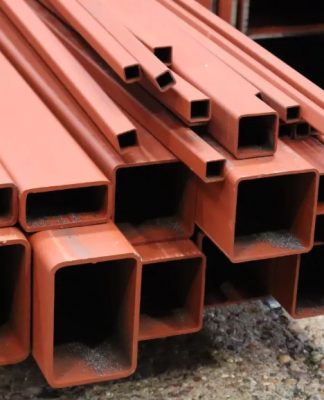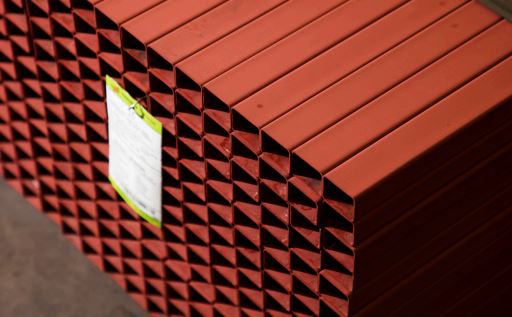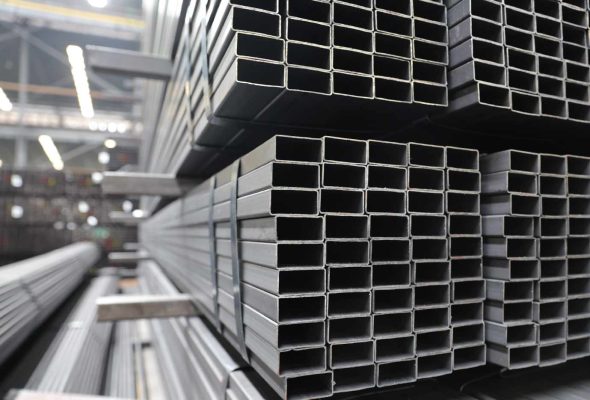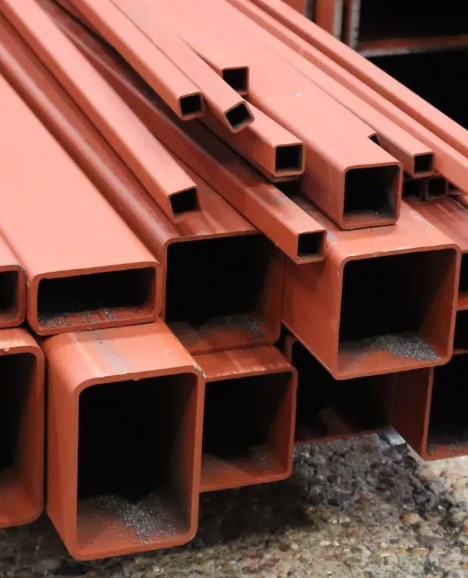Square Profile Weight Calculation
Square iron profile weight calculation, you must first determine the edge widths of the profile you want to use. Then determine the wall thickness and finally the length, i.e. meters. The specific gravity of iron is calculated as 7.85. As a result, do not forget that materials such as stainless, steel and aluminum have different specific gravity.
To calculate the weight of square profiles, you can use the following formula:
Weight = (Side Length x Side Length x Wall Thickness x Density) / 1000
Variables in the formula:
- Weight: Weight of the profile in kg
- Side Length: Edge length of the profile in mm
- Wall Thickness: Wall thickness of the profile in mm
- Density: Density of the material of the profile in kg/m³
Example:
To calculate the weight of a square profile with side length 40 mm, wall thickness 3 mm and density 7850 kg/m³:
Weight = (40 x 40 x 3 x 7850) / 1000 = 4704 kg
Factors affecting the weight of the square profile:
- Side length: As the side length increases, the weight of the profile also increases.
- Wall thickness: As the wall thickness increases, the weight of the profile also increases.
- Density: As the density of the material of the profile increases, the weight of the profile also increases.
Before purchasing a square profile:
- Determine the side length, wall thickness and material of the profile you need.
- Get quotes from different sellers and compare prices.
- Calculate the weight of the profile and consider its carrying capacity.
- The weight of square profiles may vary depending on the material used. For example, the weight of aluminum square profiles is less than that of steel square profiles.
- The weight of square profiles may also vary depending on the tolerances used during production.
- The weight of square profiles can be affected by processes such as cutting and welding.
Square Iron Profile Weight Calculation
For square iron profile weight calculation, you can use the following formula:
Weight = (Side Length x Side Length x Wall Thickness x Density) / 1000
Variables in the formula:
- Weight: Weight of the profile in kg
- Side Length: Edge length of the profile in mm
- Wall Thickness: Wall thickness of the profile in mm
- Density: Density of the material of the profile in kg/m³ (7850 kg/m³ for Iron)
Example:
To calculate the weight of a square iron profile with side length 40 mm, wall thickness 3 mm and density 7850 kg/m³:
Weight = (40 x 40 x 3 x 7850) / 1000 = 4704 kg
Factors affecting the weight of the square iron profile:
- Side length: As the side length increases, the weight of the profile also increases.
- Wall thickness: As the wall thickness increases, the weight of the profile also increases.
- Density: As the density of the material of the profile increases, the weight of the profile also increases.
Before buying square iron profile:
- Take a good look at the square iron profile prices.
- Determine the side length, wall thickness and material of the profile you need.
- Get quotes from different sellers and compare prices.
- Calculate the weight of the profile and consider its carrying capacity.



Square Iron Profile Types
- Square iron profile is a versatile structural material produced in various sizes and thicknesses and used in many different applications. Some of the most common types of square iron profiles include:
- Hot Rolled Square Iron Profile: These profiles are manufactured from steel rolled at high temperatures and have a rough surface appearance. They are tough and durable and are ideal for construction, machinery manufacturing and other heavy industry applications.
- Cold Rolled Square Iron Profile: These profiles are manufactured from steel rolled at room temperature and have a smooth surface appearance. They are less durable than hot rolled profiles, but are better formable and have more precise dimensional tolerances.
- Square Iron Profile with Tensile Section: These profiles are produced by drawing from hot rolled steel sheets and are lighter and thinner than other square iron profiles. They are less durable, but can be shaped better and used to create more complex profiles.
- Angle Profile: These profiles consist of two planes welded together at right angles. They are sturdy and durable and are ideal for framing, bracing and other structural applications.
- Pipe Profile: These profiles are a hollow, circular-section structural material. They are lightweight, durable and can be used as posts, beams and other structural members.
Square iron profiles are also available in a variety of other shapes, such as:
- round profile
- oval profile
- D-profile
- T-profile
When choosing a square iron profile, it is important to consider the requirements of your application. Factors to consider are:
- Required strength and durability
- Weight
- Dimensions and tolerances
- Cost
Square Iron Profiles Quality
Square iron profiles are produced in different qualities according to their production methods and chemical composition. The most common square iron profile grades are:
S235JR:
- This is the most common square iron profile grade.
- It is classified as structural steel and is suitable for construction, machinery manufacturing and other general-purpose applications.
- Chemical composition: 0.15-0.25% Carbon, 0.55-1.60% Manganese, 0.040% maximum Phosphorus, 0.040% maximum Sulfur.
- Mechanical properties: 235 MPa minimum Yield Strength, 450 MPa minimum Tensile Strength, 22% minimum Elongation.
S355JR:
- This is a higher strength square iron profile grade than S235JR.
- It is used for structures and machines that need to carry heavier loads.
- Chemical composition: 0.15-0.25% Carbon, 0.55-1.60% Manganese, 0.040% maximum Phosphorus, 0.040% maximum Sulfur.
- Mechanical properties: 355 MPa minimum Yield Strength, 510 MPa minimum Tensile Strength, 20% minimum Elongation.
St44-2:
- This is a square iron profile grade with higher strength and better toughness than S355JR.
- It is used for structures and machines that need to be shock resistant and suitable for use at low temperatures.
- Chemical composition: 0.16-0.24% Carbon, 0.40-1.35% Manganese, 0.050% maximum Phosphorus, 0.050% maximum Sulfur.
- Mechanical properties: 440 MPa minimum Yield Strength, 580 MPa minimum Tensile Strength, 27% minimum Elongation.
DIN 17100:
- This is a square iron profile quality produced according to the German standard.
- It has similar strength properties to S235JR and S355JR.
- It is widely used in Europe.
ASTM A36:
- This is a quality of square iron profile produced according to American standard.
- It has similar strength properties to S235JR.
- It is widely used in the United States.
Square Profile weight calculation, kg, kilo, ton, height, piece, bond, quantity, 6meter, weight, weight, box, calculation, transport, iron, 40×40, 40×60, 2mm, 1.5mm, 1mm, steel, painted, metal, Istanbul, Izmir, Ardahan, Bursa, Sinop, Uşak, Isparta, Denizli, Tokat, Sivas
